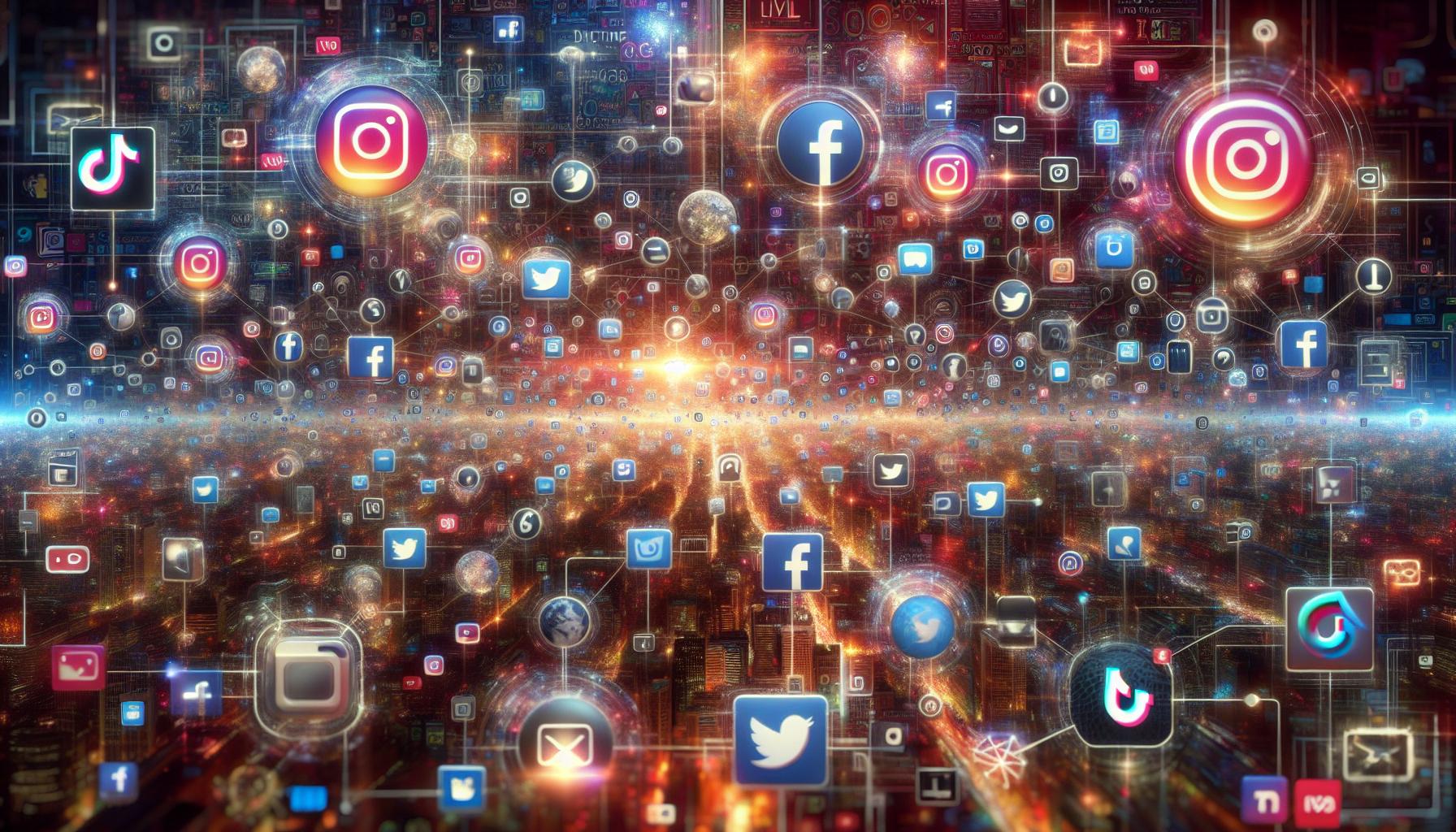Physical Address
304 North Cardinal St.
Dorchester Center, MA 02124

Digital media has revolutionized how people consume and interact with content in today’s connected world. From streaming services and social media platforms to e-books and mobile apps, digital media encompasses any content that exists in electronic form and can be transmitted over computer networks or digital devices.
Understanding digital media examples is crucial as they continue to shape modern communication and entertainment. While traditional media like newspapers and television still exist, their digital counterparts have gained significant prominence. Whether it’s downloading music, watching YouTube videos, or reading online news, digital media has become an integral part of daily life and shows no signs of slowing down.
Digital media encompasses electronic content forms that shape modern communication across multiple platforms. Internet-based platforms serve as primary channels for digital media distribution, including:
The integration of digital media appears in several key areas:
| Area | Digital Media Format | Usage Statistics |
|---|---|---|
| Entertainment | Video streaming | 85% of US households subscribe |
| Communication | Social media | 4.9 billion active users globally |
| Education | E-learning platforms | $250 billion market value |
| Business | Digital documents | 2.5 quintillion bytes created daily |
Digital media transforms traditional content through:
The technological infrastructure supporting digital media includes:
These components create an interconnected ecosystem where digital content flows seamlessly between devices users platforms. The advancement of technology continues expanding digital media capabilities through enhanced connectivity processing power storage capacity.

Social media platforms represent a significant category of digital media, connecting billions of users through interactive content sharing networks. These platforms transform traditional communication into dynamic digital experiences through multimedia content engagement features.
Facebook leads social networking platforms with 3.05 billion monthly active users, enabling digital content sharing through text posts, images, videos, live streams, and interactive stories. Twitter specializes in real-time digital communication through 280-character posts, supporting embedded media formats including GIFs, polls, videos, and audio spaces. Both platforms incorporate advanced digital features:
Instagram and TikTok exemplify visual-first digital media platforms, focusing on photo and video content delivery. Instagram serves 2.35 billion monthly active users with:
| Platform | Monthly Active Users | Primary Content Type |
|---|---|---|
| 3.05 billion | Multi-format | |
| 2.35 billion | Visual | |
| TikTok | 1.5 billion | Short-form video |
| 450 million | Text-based |
Streaming services represent a cornerstone of digital media, delivering on-demand content through internet-enabled devices. These platforms revolutionize entertainment consumption by providing instant access to vast libraries of digital content.
Video streaming platforms transform traditional television viewing through digital distribution networks. Netflix leads the market with 247 million subscribers globally, offering original content alongside licensed movies and shows. Popular video streaming services include:
| Platform | Global Subscribers | Content Library Size |
|---|---|---|
| Netflix | 247M | 5,000+ titles |
| Disney+ | 150M | 7,500+ titles |
| HBO Max | 95M | 3,500+ titles |
| Hulu | 48M | 4,000+ titles |
| Platform | Monthly Active Users | Music Library |
|---|---|---|
| Spotify | 489M | 100M tracks |
| Apple Music | 88M | 90M tracks |
| Amazon Music | 82M | 90M tracks |
| YouTube Music | 80M | 80M tracks |
Digital publishing transforms traditional print media into interactive electronic formats accessible across multiple devices. This evolution spans various formats from e-books to dynamic web content.
E-books represent a $16.7 billion market with 1.1 billion digital books sold annually. Popular platforms like Amazon Kindle dominate digital book distribution with features including:
Digital magazines reach 308 million readers through platforms like Apple News+ Flipboard including:
Content management systems power 455 million WordPress websites generating 70 million new posts monthly. Modern blogging platforms offer:
Professional websites utilize digital publishing tools including:
| Platform Type | Global Users | Annual Growth |
|---|---|---|
| E-books | 1.1B readers | 6.8% |
| Digital Magazines | 308M readers | 4.2% |
| Blogs | 2B monthly visitors | 12.5% |
| CMS Websites | 1.7B users | 8.9% |
Mobile applications represent a significant segment of digital media, generating $169 billion in revenue through 255 billion downloads across iOS and Android platforms in 2023. These applications transform smartphones and tablets into versatile digital media consumption devices.
Mobile gaming apps dominate the app market with 78% of all app revenue. Popular titles like Pokémon GO utilize augmented reality features while Roblox supports user-generated content with 70.2 million daily active users. Key characteristics include:
| App Category | Market Share | Monthly Active Users |
|---|---|---|
| Gaming Apps | 78% | 2.8 billion |
| Utility Apps | 22% | 4.1 billion |
| Productivity | 15% | 345 million |
| Navigation | 12% | 1 billion |
Digital art and design represents the intersection of creativity and technology, transforming traditional artistic methods into digital formats through specialized software and hardware tools.
Computer graphics encompass digitally created images rendered through specialized software programs like Adobe Illustrator Maya 3D. Artists create vector illustrations scalable logos animated characters using digital drawing tablets graphics processors. The creation process involves:
| Digital Photography Components | Technical Specifications |
|---|---|
| Image Sensors | 20-60 megapixels |
| Color Depth | 24-bit (16.7M colors) |
| File Formats | RAW JPEG HEIF |
| Storage Capacity | 32GB-2TB memory cards |
Digital media has revolutionized how we create share and interact with content. From digital art and computer graphics to digital photography these tools have transformed traditional methods into dynamic digital experiences. The evolution of digital media continues to push boundaries offering endless possibilities for creators and consumers alike. Understanding these different forms of digital media empowers users to make informed choices and leverage the right tools for their creative endeavors.